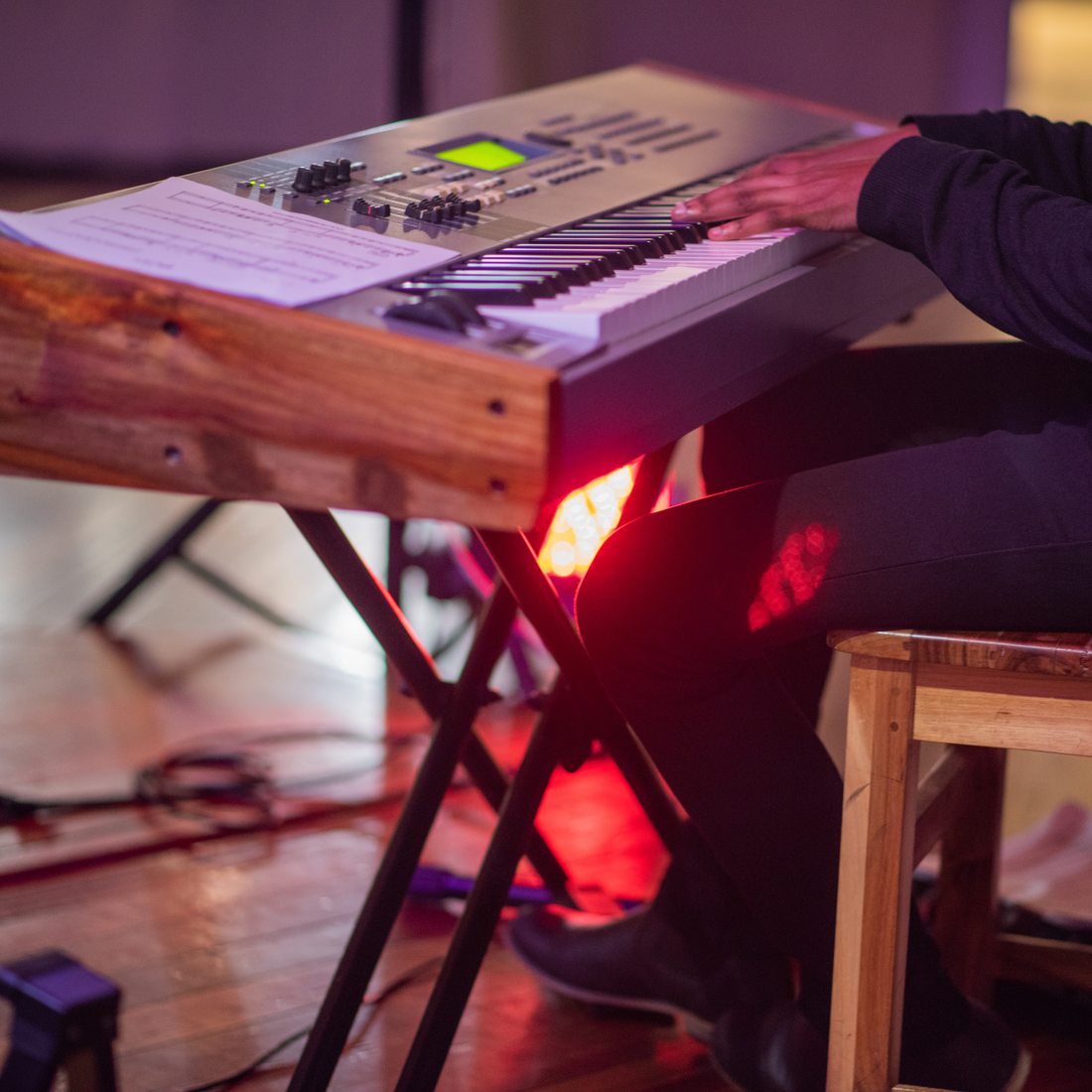
Pianos For Gigging Musicians
Share
The following is an excerpt from Chapter 3 of Keyboards 101: Sound design for gigging pianists
Pro-level keyboards can be broken down into following categories:
Clonewheels
Simple keyboards dedicated to recreating the tone-wheel Hammond organ sounds
Stage Pianos
Simple keyboards dedicated to quality acoustic piano, electric piano, and clavinet sounds
Synthesizers
Complex keyboards that create and manipulate synthesised electronic sounds
Workstation Synthesizers
Complex keyboards that contain thousands of sounds from acoustic to electronic
MIDI Controllers + VST Software
Complex setups involving computers/tablets and specialised software
Simple VS Complex
As you can see, we’ve boiled these keyboards down to two main groupings - simple and complex
Simple Keyboards
Stage pianos and clonewheels are the simplest keyboards to master
Both are designed to give easy access to basic controls like layers, splits, and FX
They are the go to for players that need quality piano, electric piano, and hammond organ sounds with easy access to FX to control and shape their sound live in the moment
Stage Pianos
Stage pianos focus on pianos, electric pianos, clavinets and some basic synth/other sounds - most stage pianos will have a “weighted” piano-like keyboard action
Clonewheels
Clonewheels focus on the sound of the hammond organ with controllable drawbars to shape the tone - most clonewheels will have a waterfall/semi-weighted keyboard action that feels lighter to play and allows more organ techniques
Stage Piano/Clonewheel Combo Keyboards
Combo keyboards (like the Yamaha YC series, Nord Electro series, and Roland RD2000 series) feature traditional stage piano set ups with included clonewheel engines and drawbars to get the best of both worlds
For simple rigs you can choose a single combo keyboard - the upside is having all your go to sounds in one keyboard, while the downside is choosing either a piano specific keyboard action (weighted) and loosing out on some organ technique, or choosing an organ specific keyboard action (semi-weighted, synth-action, or waterfall) and loosing out on some dynamic control
Complex Keyboards
Synthesizer Workstations and MIDI Controllers are the more complex options - they offer huge sonic control at the expense of “ease of use”
They both offer huge amounts of control and sonic capabilities with thousands upon thousands of high quality sounds and the ability to create incredibly complex patches (multiple layers and splits, with many instruments at the same time, and plenty of FX)
Workstations
While workstations include high quality piano, electric piano, and organ sounds, they are the go-to for gigging musicians who need highly tailorable synth sounds, orchestral sounds, plenty of control over FX, and assignable physical controls.
Midi Controllers and Computer Setups
Midi controllers and computer setups are the go to for music theatre keyboardists - they allow endless patching options at the expense of being not so user friendly or immediately adaptable in a live setting
Flagship Professional vs. Prosumer Keyboards
Most keyboard manufactures have two lines of pro equipment:
Flagship/Professional
Top of the range keyboards designed for pro touring musicians and session musos
Prosumer
Budget friendly keyboards that contain many of the features and sounds of the top of the range keyboards, but often with a plastic casing, a few less features, and some manufacturing compromises
Clonewheels
Clonewheels are “clones” of the famous Hammond tonewheel organs (the hammond B3 being the most famous) - they focus on producing a quality tonewheel organ sound, with physical or digital drawbars to control the tone, and onboard FX emulations for the Leslie rotary speaker
Most clonewheels will have a few extra stage-piano sounds, with some operating as stage piano/clonewheel combos, but some concentrate entirely on the hammond organ emulation
Stage Pianos
Like the name suggests, these keyboards are portable and designed for use on stage
Made to be simple
Stage pianos are amongst the simplest pro keyboards to use - they have a small collection of high quality sounds, with FX in easy reach to dial in as you’re playing live
The sounds that stage pianos will usually include:
Several acoustic pianos (most with grand and upright variations)
Several electric pianos, electric grand, DX/FM piano & clavinet
Organ (some crossover with clonewheels and include clonewheel technology + drawbars)
A handful of synth samples
A handful of “other” or “sub” sounds, including strings, brass, woodwinds, accordions, guitar etc but there won’t be alot of options for each sound
They are designed for ease of use: creating and saving patches with basic layers and splits is simple, FX controls are easily accessible, and reverb and EQ are usually a reach away
When to use stage pianos?
When you need good quality pianos and electric pianos, with a basic level of other sounds chipped in PLUS easy access to FX to control in real time (many stage pianos will also be clonewheels, so you can cover most keyboard bases with one piano)
Workstation Synthesizers
As the name suggests, these things are absolute workhorses, and are designed for use on stage and in studios
They house a HUGE collection of sounds, have endless amounts of FX parameters to tweak, have large screens capable of showing huge amounts of info. and have the ability to create complex layers and keyboard patches.
Used quite a lot in music theatre, and in “patch heavy” bands, they have a huge amount of sonic scope, at the cost of not being “instantly tweakable” - these things take a fair bit of homework to get your head around, but if you invest your time you’ll be sure to have a killer sound
Synthesizers
Dedicated synthesisers are focused entirely on electronically produced sounds, with varying FX and filters, and varying degrees of usability
(some are relatively simple, while some are super tricky)
There are SO many types of synths out there - the two main categories can probably be boiled down to digital and analog
Analog Synthesizers
Analog synthesizes creates sound using analog circuits and voltage-controlled components like oscillators, filters, and amplifiers. They shape sound through continuous electrical signals, resulting in a warm, rich, and often unpredictable tone.
Digital Synthesizers
Digtal synthesizers generate sound using digital signal processing. They often include presets, sound editing features, effects, and sometimes sampling capabilities. Digital synths are known for their versatility, reliability, and ability to store complex patches and sounds
Both analog and digital synths can be either monophonic (can only produce a single note at a time) or polyphonic (can produce multiple notes at the same time)
There are LOADS of analog and digital synths out there, and they all have their own focuses - from pads, to leads, to bells, to bass (more on that in our patching section)
Rather than giving a list of currently available keyboards, we’re just going to list a handful of brands and let you do your own research.
Behringer, Roland, Oberheim, Moog, Sequential, Nord, Korg, Arturia, Novation, Dreadbox, UDO Audio, Waldorf, PWM, Elektron, ASM
The world of synths is wide ranging, and you can get some crazy gear
This is by no means an extensive and exhaustive list, but it should give you a starting point for research
MIDI Controllers + Computers, Tablets & VST's
MIDI Controllers have no internal sounds so need to be paired with VST software (software synths) on computers/tablets
They provide the most flexibility and endless patching options at the expense of being more complex setups
Predominately used in music theatre, touring band shows that require complex keyboard patches, and recording studios
This route offers endless flexibility in patching options
What is a MIDI Controller?
A MIDI Controller is a keyboard without any onboard sounds
Imagine typing into a word processer on your computer - you can change the font, make the words bold, underline specific sections of text. We type the info using the computers keyboard, but we can change that text endlessly using fonts.
It’s exactly the same using a midi controller, but instead of changing fonts, you are changing sounds - the keyboard sends the note information
(like how hard it’s been pressed, and how long it’s being held for)
but you choose from the sounds that live on your computer or tablet
Dedicated midi-controllers tend to have a collection of knobs, sliders, and pads, but almost any keyboard can be used as a midi controller by connecting to a computer using the USB connection
What is MIDI?
MIDI (Musical Instrument Digital Interface) is the language that keyboards and other digital musical instruments use to communicate with each other
What are VST’S?
VST stands for Virtual Studio Technology - they are the instruments and effects that live on your computer
The great thing with VST’s is the versatility - there is an uncountable amount of VST’s available from authenic cello’s to full blown string orchestras, synth upon synth, a
mind-bogglingly diverse amount of electro-mechanical pianos, acoustic pianos out the whazoo, stunning guitars, mournful trumpets - the list is endless
Host Software
VST’s are used in host software: mostly in DAW’s (Digital Audio Workstations)
Most DAW’s are recording software (like Ableton Live, Pro Tools and Logic Pro), there are a few that are created with live performing in mind
The host software allows you to load up any virtual instrument and create complex layers and splits, as well as assigning pedals and physical controls to FX and other elements
These are the three biggest players:
Mainstage
+ Industry standard for Broadway and the West End - because of it’s wide-ranging use there are loads of learning resources and support to help you program
+ Ability to create incredibly complex patches
+ Comes with a tonne of included sounds and FX
+ Relatively cheap
- Only runs on Mac computers
*We have included a gig ready MainStage patch file for a basic keyboard setup with this book, MainStage needs to be purchased separately in order to load the MainStage file
Gig Performer
+ Runs on Mac and Windows computers
+ Probably the simplest to program
- Has a limited amount of included instruments and FX
(so you’ll have to invest in other VST’s to round out your instrument collection)
- More expensive than MainStage
Camelot Pro
+ Runs on Mac and Windows computers AND some iOS iPads
+ Includes a PDF score viewer for sheet music/chord charts
+ Relatively affordable on iOs
- Fairly expensive on Mac/Windows
Note: some people also have success utilising Ableton Live and other recording studio DAW’s in live settings, but we have focused this list on software dedicated to live performance
Keyboards 101 contains even more tips and tricks on putting together your ideal gigging rig, as well as a plethora of sound design advice, a dictionary of common FX, and smart ways to get your sound PHAT! It's the guide for every gigging pianist.

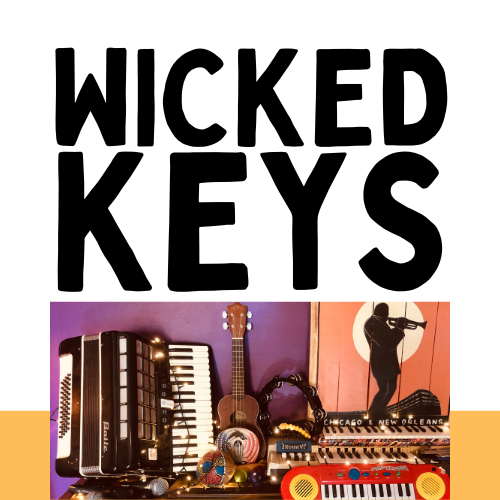

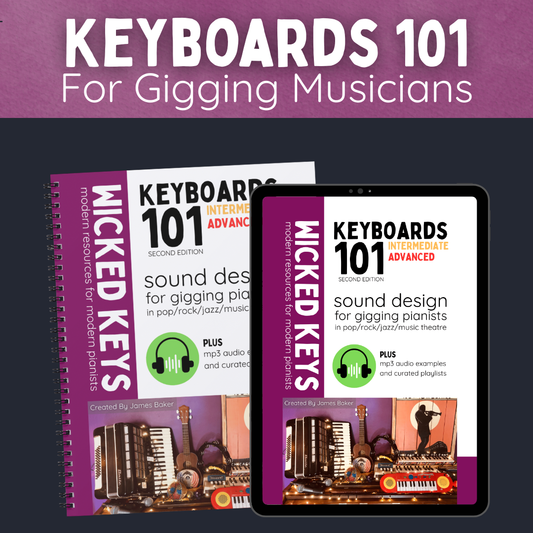


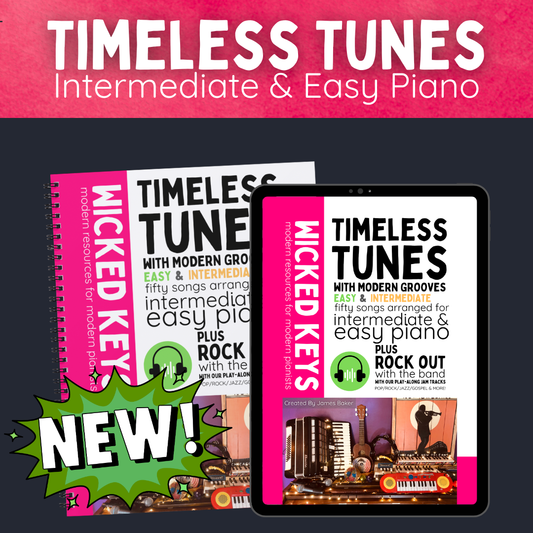
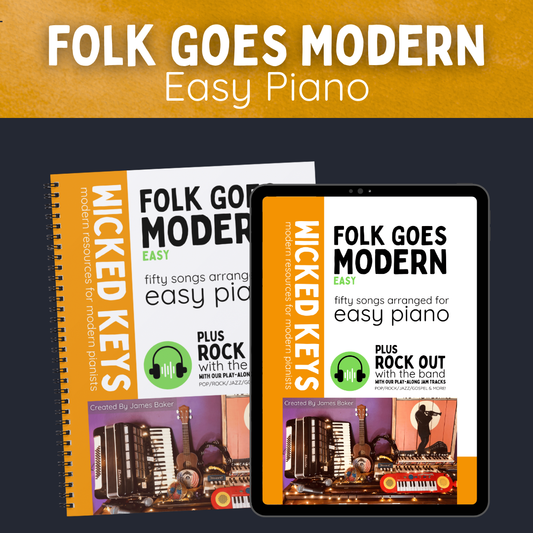

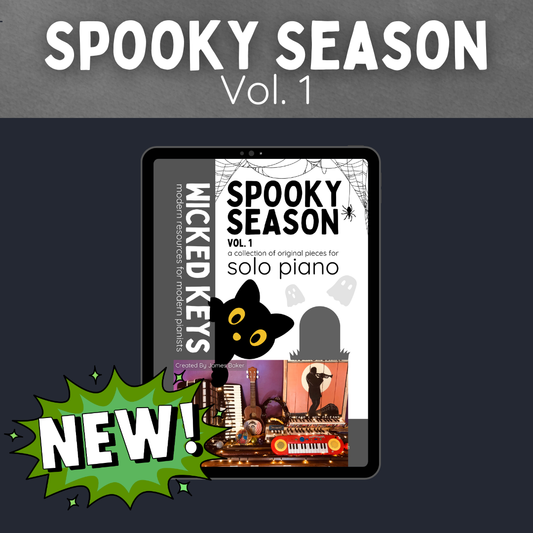
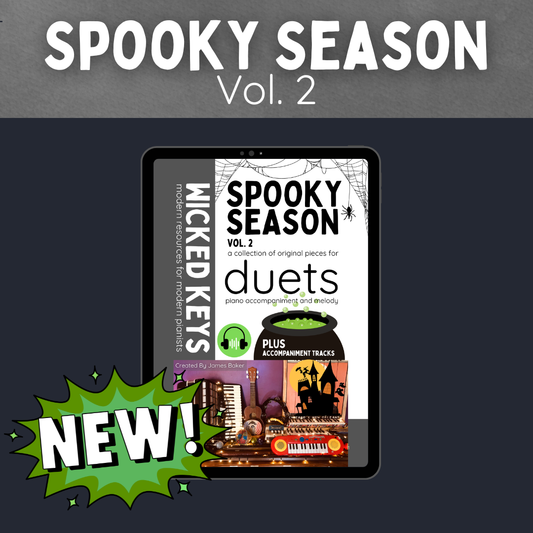
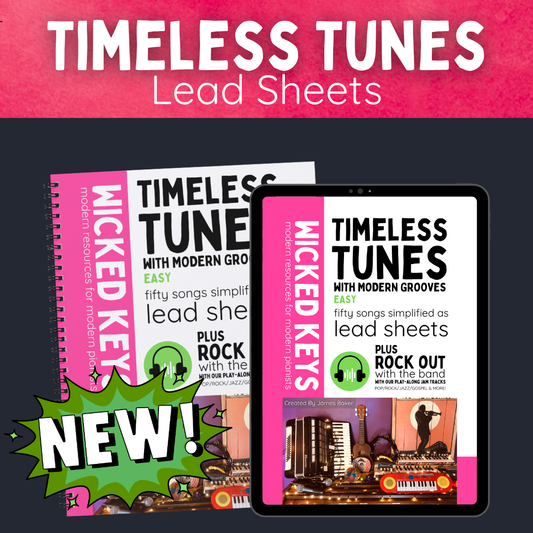
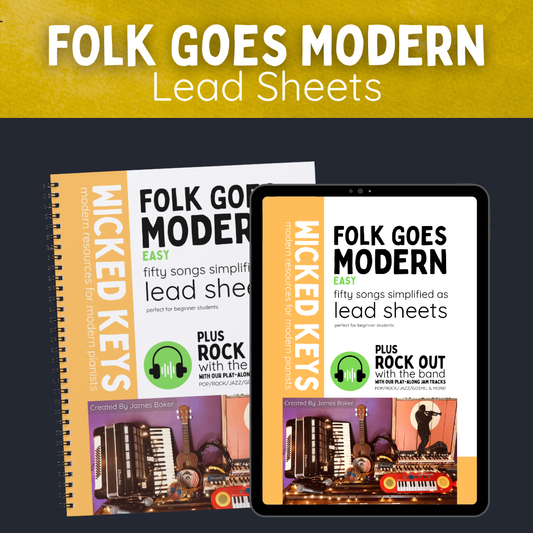
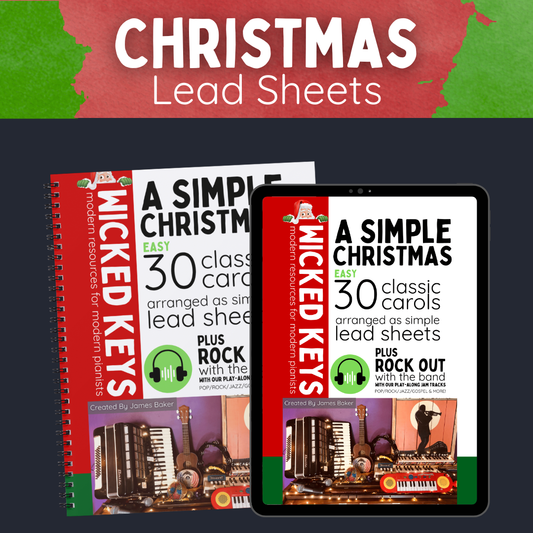
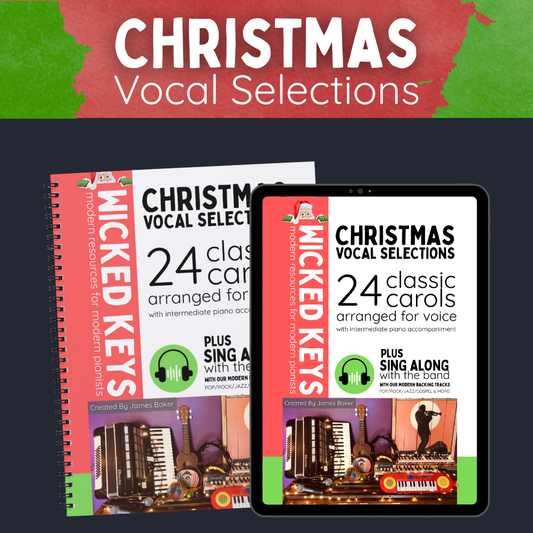
![[COMING SOON] Junior Jazz Vol. 1](http://wickedkeys.com.au/cdn/shop/files/22_497fc077-4911-4527-bfad-a7749288e7ca.png?v=1759207635&width=533)
![[COMING SOON] Beginner Blues Vol. 1](http://wickedkeys.com.au/cdn/shop/files/23_844563d1-4c1b-4d59-97de-72c8f9c5122a.png?v=1759207694&width=533)
![[COMING SOON] Accompanying 101](http://wickedkeys.com.au/cdn/shop/files/18_f4c8b907-7385-46b3-801a-77b28cf7d83d.png?v=1759143867&width=533)
![[COMING SOON] Lead Sheet 102](http://wickedkeys.com.au/cdn/shop/files/17_5e2c6a47-e49a-4de2-b4d8-c72a4ed236f6.png?v=1759143867&width=533)
![[COMING SOON] The Business of Teaching Music](http://wickedkeys.com.au/cdn/shop/files/13_9b7bd319-bf2d-4b22-997d-4df4caa52375.png?v=1759143866&width=533)